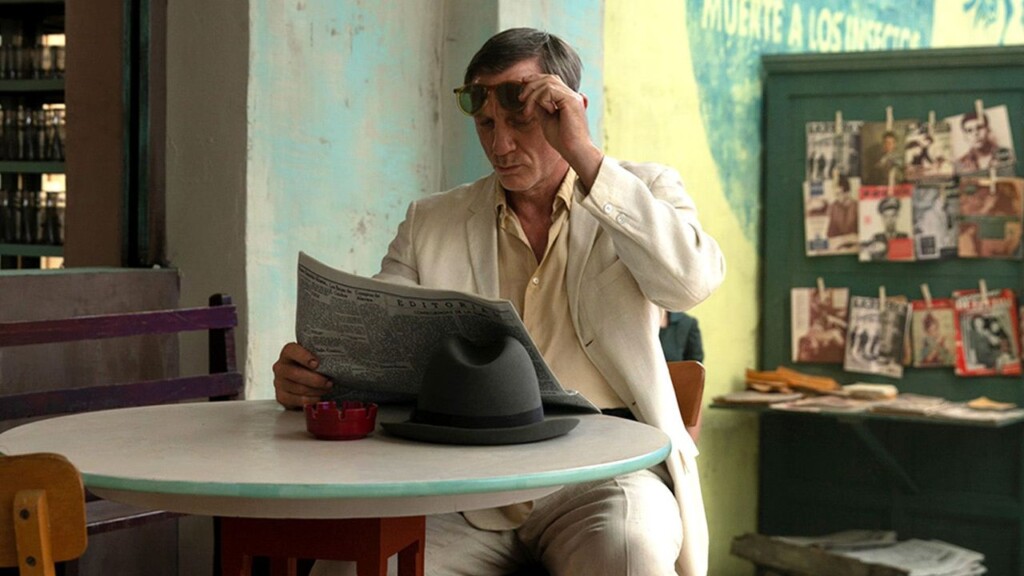The shadow of James Bond looms large over the men who have played 007.
Sean Connery and Pierce Brosnan successfully escaped the shadow of Bond (winning an Oscar in Connery’s case, butchering ABBA classics in the case of Brosnan) and Daniel Craig is well on track to have a strong post-Bond career.
With the Knives Out franchise unlocking a different side of Craig, his work with Italian auteur Luca Guadagnino in the new film Queer is his greatest performance yet.
Craig stars as William Lee, a stand-in for beat author William S. Burroughs, as he travels through 1950s Mexico City in a bid to find the one thing that seemingly eludes him; a queer romance that lasts.
Guadagnino’s brand of queerness has become synonymous in the same way that John Waters and Gus Van Sant defined it in the 70s and 90s respectively.
The Italian auteur proved he was a box office draw this year with Challengers making over 100 million worldwide, but one suspects this was the film he’s been itching to make all along.
Like his divisive Suspiria remake from 2018, Guadagnino and screenwriter Justin Kuritzkes dig into the text of Burrough’s novella and remix it for the modern era.
The Guadagnino flourishes are all there; the achingly hip needle drops, the Reznor/Ross score, the lush Sayombhu Mukdeeprom cinematography and naturally, a magnetic performance front and centre.
Guadagnino is an avowed fan of Jonathan Demme (as is this reviewer) and the Italian has picked up a thing or two from the director he did his university thesis on.
Demme was known for using music to punctuate a scene, perhaps even better than Scorsese in terms of setting a mood.
Nirvana needle drops are scattered all around Queer, but the peak of the film has a brilliant deployment of Come As You Are, the context of which we won’t spoil because it is so breathtaking.
Daniel Craig is likely to be in awards season contention for his performance in this film and it is easy to see why.
Bond directors Martin Campbell and Sam Mendes correctly identified that Craig’s piercing eyes are a character themselves and Guadagnino smartly deploys the Craig glare early and often.
Queer is a showcase for all of Craig’s abilities; his motormouth work that made Benoit Blanc a household name is accounted for, as is his ability to win a staring contest with a mirror.
There is a haunted quality to Craig’s performance – the crux of the film revolves around him trying to get into the head of a younger man, played by Drew Starkey and how he wants to speak to him without actually talking to him.
Craig is able to say what he’s thinking without opening his mouth, just like when he was 007 sneaking around in a tuxedo; the eyes have it.
Guadagnino deploys the tricks of his compatriot Federico Fellini to get Craig’s interior motives across with the film containing plenty of dream-like, impressionistic material.
Queer is a good adaptation of Burrough’s work – not unlike Cronenberg’s Naked Lunch adaptation – because it captures the beatnik spirit of Burrough’s but it’s very clearly an auteur putting their stamp on the work.
The film deploys dream sequences to reflect Daniel Craig’s troubled inner state; one particularly arresting scene sees him navigating a hallway and all the people he has met and disappointed over the course of the story are just there, judging in a perfect representation of an anxiety-ridden dream.
Guadagnino also deploys the trick of having the metaphysical representation of Craig’s character go out of body to touch the person he wants to be with all while the conscious, breathing Craig is sitting down.
In case you couldn’t tell, this is a film made by an Italian arthouse director.
In more recent times we have seen actors best known for big franchises rarely taking risks with the projects they pick – poor Chris Evans is going to be Captain America forever, Robert Downey Junior is going to be making superhero films until he’s 95 – but Craig has really made the effort to show people he’s not going to run around in the hamster wheel forever.
Craig’s performance here is in conversation with Sebastian Stan in A Different Man and The Apprentice; someone best known for franchise work using their clout to get a risky, experimental film made at a studio level.
Queer isn’t likely to sell out multiplexes like Wicked but it doesn’t need to; this is the kind of bold and daring film that cinemas show at 2 in the day, attended by college kids and elderly couples alike (a comparison that is in no way reflecting this reviewer’s experiences with Carol when it came out in 2015).
Those who see it aren’t likely to forget it.
MUBI is handling distribution rights to the film on this side of the pond, with A24 handling it in the United States; both distributors have shaken up the Hollywood landscape in recent times (MUBI are also behind the likes of Aftersun and The Substance and A24 are behind films like Civil War and The Zone Of Interest).
With this review being our final print review of the year, we salute MUBI and A24 for keeping the spirit of New Hollywood alive.
Queer is a film that only could have been made by Guadagnino and only could have starred Craig; we thank the movie gods for allowing this pairing to happen.
